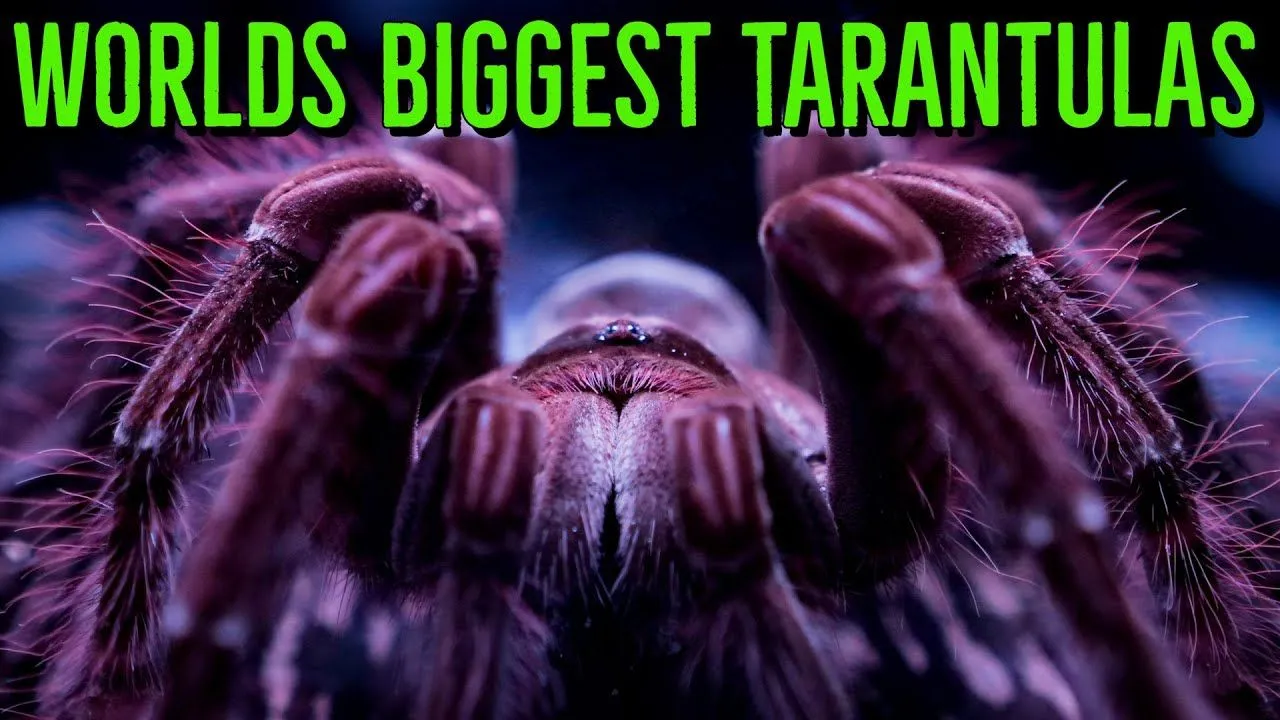The Goliath Birdeater A True Giant
When it comes to the question of which tarantula is the biggest, the Goliath birdeater (Theraphosa blondi) usually takes the crown. This impressive arachnid is not only the largest tarantula species but also one of the biggest spiders in the world. Its sheer size is enough to make even the most seasoned arachnophobes take a step back. These giants are a fascinating subject of study for entomologists and a source of both fascination and fear for the general public. They demonstrate nature’s incredible diversity and the extremes to which life can evolve. The Goliath birdeater’s imposing stature is a testament to the wonders of the natural world, making it a prime example of why the study of arachnids is so compelling.
Goliath Birdeater Size and Appearance
The Goliath birdeater’s size is truly remarkable. They can have a leg span of up to 12 inches (30 cm) and weigh over 6 ounces (170 grams), which is about the same as a small puppy. Their bodies are covered in brown hairs, which can vary in shade. They have large fangs, which they use to inject venom into their prey. Despite their intimidating appearance, they are not typically aggressive towards humans, unless provoked. Their overall appearance is robust and muscular, perfectly adapted for their predatory lifestyle. Their massive size is a key element in their hunting success and a critical factor in their survival in the wild. Their formidable size, coupled with their physical attributes, makes the Goliath birdeater a truly imposing creature.
Habitat and Distribution of Goliath Birdeater
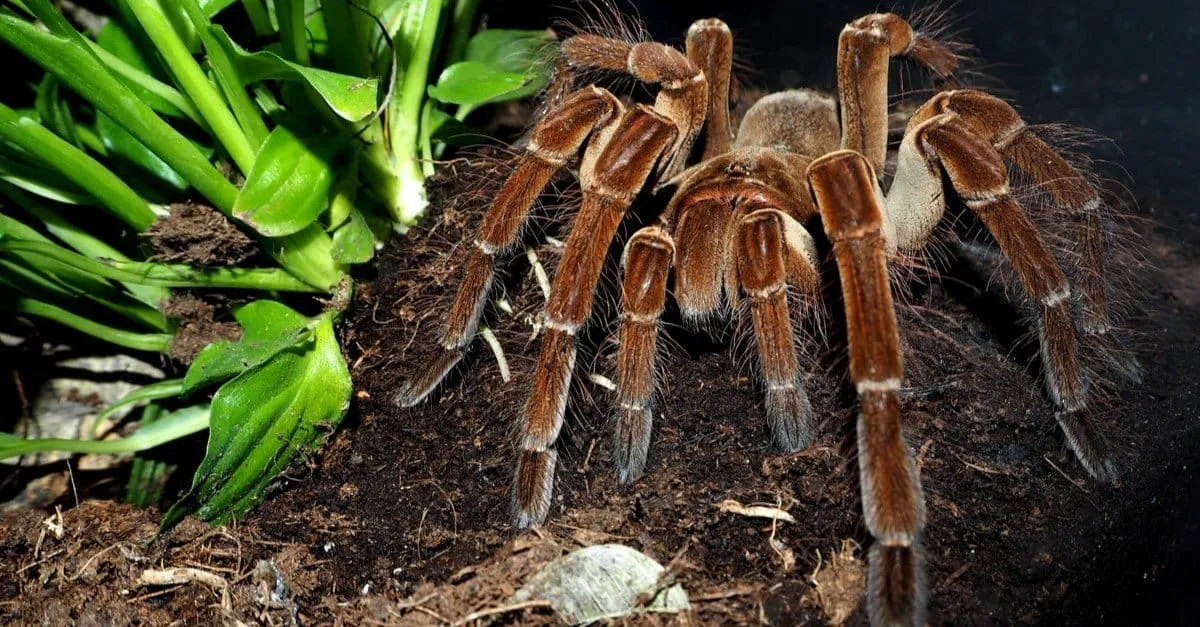
These massive spiders are native to the rainforests of northern South America. They are primarily found in countries like Brazil, Venezuela, Guyana, Suriname, and French Guiana. They prefer to live in burrows, which they dig themselves or take over from other animals. Their habitat is typically humid and warm, providing the ideal environment for their survival. The dense, tropical rainforests offer plenty of hiding places and a rich supply of prey. Understanding their habitat is key to appreciating their adaptation to their environment. Protecting their natural habitat is essential for their survival, as deforestation and habitat destruction pose significant threats. Their distribution is a critical factor in conservation efforts, highlighting the importance of preserving their native ecosystems.
Diet and Behavior of Goliath Birdeater
Despite their name, Goliath birdeaters rarely eat birds. Their diet primarily consists of insects, worms, and other invertebrates. However, they are opportunistic predators and have been known to eat small vertebrates, such as lizards, rodents, and, occasionally, small birds. They are ambush predators, waiting patiently in their burrows for prey to come within reach. They then lunge out, inject venom, and use their powerful fangs to crush their meal. Their behavior is generally docile unless threatened. They will often flick urticating hairs from their abdomen as a defense mechanism. These hairs cause intense irritation if they come into contact with skin or eyes. Their hunting behavior and defensive strategies are fascinating examples of adaptation in the animal kingdom, making them even more intriguing.
The Pinkfoot Goliath Another Contender
Another impressive species often mentioned in the conversation of which tarantula is the biggest is the Pinkfoot Goliath (Theraphosa apophysis). While slightly smaller than the Goliath Birdeater, it still holds a prominent position among the largest tarantulas. Their unique appearance and substantial size make them a subject of interest for tarantula enthusiasts. The Pinkfoot Goliath is a testament to the diversity within the Theraphosa genus, showcasing the variations that can occur within a single family of spiders. Their existence demonstrates the complexity and wonder of the natural world and why the study of arachnids is so captivating.
Pinkfoot Goliath Physical Characteristics
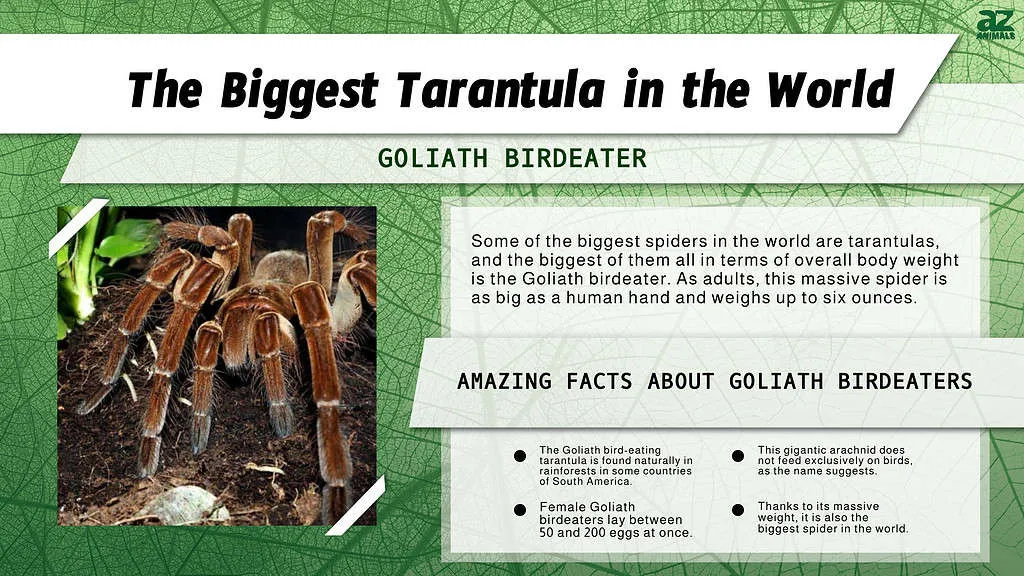
The Pinkfoot Goliath is distinguished by its impressive size and the unique coloration of its feet. They can reach a leg span of up to 10 inches, making them one of the largest tarantulas. Their bodies are typically covered in brown or reddish-brown hairs. However, the most striking feature is the pink coloration on their feet and legs. This distinctive color gives them their name and makes them easily recognizable. The pink coloration can vary in intensity from spider to spider. Their powerful fangs and robust build make them formidable predators, well-equipped for their life in the wild. Their physical characteristics contribute not only to their predatory success but also to their distinct appearance. Their substantial size, coupled with the striking pink feet, make the Pinkfoot Goliath a truly remarkable creature.
Pinkfoot Goliath Where They Live
The Pinkfoot Goliath is native to a similar region as the Goliath birdeater, primarily inhabiting the rainforests of northern South America. They are often found in the same countries, including Venezuela and Guyana. They prefer a humid and warm environment, similar to their larger cousins. They also live in burrows, either built by themselves or taken over from other animals. Their presence in these regions highlights the rich biodiversity of South American rainforests. Understanding their habitat preferences helps conservation efforts to protect these incredible spiders. Their distribution within these rainforests underscores the importance of preserving the natural environment. The habitat of the Pinkfoot Goliath reflects the delicate balance of ecosystems that support these amazing creatures.
Pinkfoot Goliath Diet and Lifestyle
The Pinkfoot Goliath, like the Goliath Birdeater, is a carnivore. Their diet consists mainly of insects, worms, and other invertebrates. They are also opportunistic predators, occasionally consuming small vertebrates. They are ambush hunters, waiting patiently for prey to come within striking distance. They inject venom to subdue their prey before devouring it. Their lifestyle involves a mix of hunting, burrowing, and avoiding predators. They spend a considerable amount of time in their burrows, where they feel safe and protected. They also employ urticating hairs as a defense mechanism. Their diet and lifestyle contribute to their role in their ecosystem and highlight their significance in the arachnid world.
The Giant Huntsman Spider A Close Relative
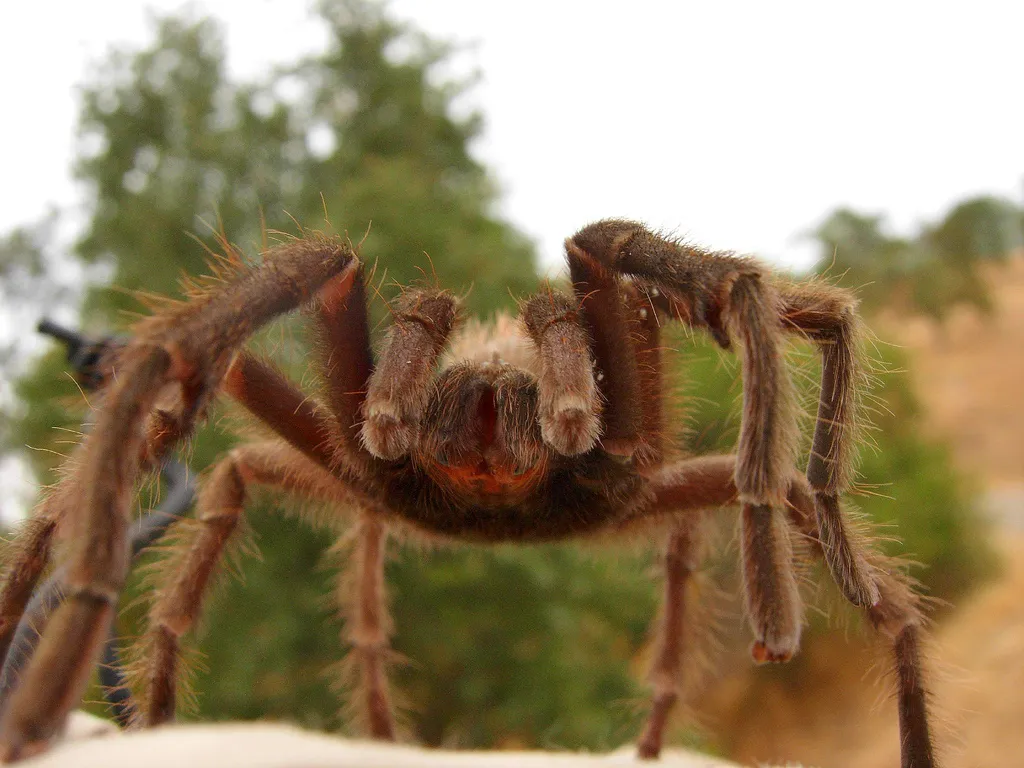
While not a tarantula, the Giant Huntsman Spider (Heteropoda maxima) is often mentioned in the context of large spiders due to its considerable size. This spider is a close relative, and its size often makes it a contender when considering which spiders are the largest. The Giant Huntsman Spider’s impressive size and unique characteristics make it an interesting comparison to tarantulas. Its presence in the discussions of large spiders reflects the broad diversity within the arachnid family. Its appearance and habits provide a fascinating insight into the world of spiders and showcase how different species can adapt and evolve.
Giant Huntsman Spider Size Comparison
The Giant Huntsman Spider is known for its impressive leg span, which can reach up to 12 inches (30 cm), rivaling some tarantula species. However, their body is flatter than that of a tarantula, making them appear less bulky. Their coloration is typically brown or grey, which helps them blend in with their surroundings. The comparison in size often leads to debates on which is truly the biggest spider, and they can be very close in their dimensions. Their size is truly remarkable, and they are one of the largest spiders in the world. The comparison between the Giant Huntsman Spider and the Goliath birdeater highlights how diverse the arachnid family is. The Giant Huntsman’s size reflects its successful adaptation to its environment.
Giant Huntsman Spider Habitat and Habits
The Giant Huntsman Spider is native to Southeast Asia, particularly Laos. They are often found in caves and under the bark of trees, as well as in human dwellings. Their flat body shape allows them to squeeze into tight spaces, making them well-suited to their habitat. They are nocturnal hunters, primarily active at night, seeking out prey. Their habits include being quick and agile, helping them to capture their meals. They are not known for being aggressive towards humans, preferring to avoid confrontation. Their lifestyle shows their adaptability and their ability to thrive in various environments, demonstrating their resilience. Their habitat and habits contribute to their role in their ecosystem, making them a fascinating example of arachnid adaptation.
Giant Huntsman Spider Diet and Prey
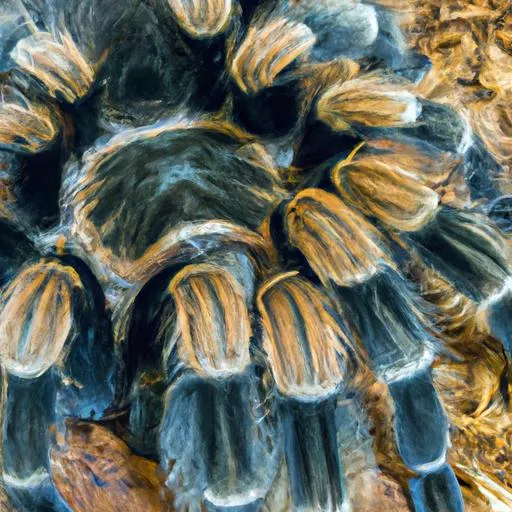
The Giant Huntsman Spider primarily feeds on insects, but they will also eat other spiders, small lizards, and even small birds. They are active hunters, relying on their speed and agility to catch their prey. They do not use webs to trap their prey, instead, they actively stalk and pounce. Their diet is crucial for maintaining their energy and providing the necessary nutrients for their survival. Their hunting strategy helps control insect populations, highlighting their ecological significance. Their diverse diet demonstrates their adaptability, making them successful hunters in their environment. Their ability to consume a variety of prey underscores their role as predators in their habitats.
Other Large Tarantula Species
Besides the Goliath birdeater, Pinkfoot Goliath, and Giant Huntsman Spider, there are several other tarantula species that can reach impressive sizes. These include the Brazilian giant blond tarantula (Lasiodora parahybana) and the Colombian purple tarantula (Xenesthis intermedia). While not as large as the Goliath birdeater, they still command respect due to their size. These species showcase the diverse range of sizes and characteristics within the tarantula family. Their presence in the discussion of which tarantula is the biggest adds more complexity and fascination. They demonstrate how varied and interesting the arachnid world is. These spiders are a testament to the impressive size variation within the tarantula family.
Other Notable Big Tarantulas
The Brazilian giant blond tarantula is known for its striking appearance and large size, often reaching a leg span of up to 10 inches. The Colombian purple tarantula is famous for its vibrant coloration, with adults displaying a beautiful purple hue. Both species are popular among tarantula keepers and are admired for their size and unique characteristics. They exemplify the diversity within the tarantula family. Their sizes contribute to their appeal and highlight their importance in the world of arachnids. Both spiders provide examples of the broad range of features in the tarantula species.
Factors Influencing Tarantula Size
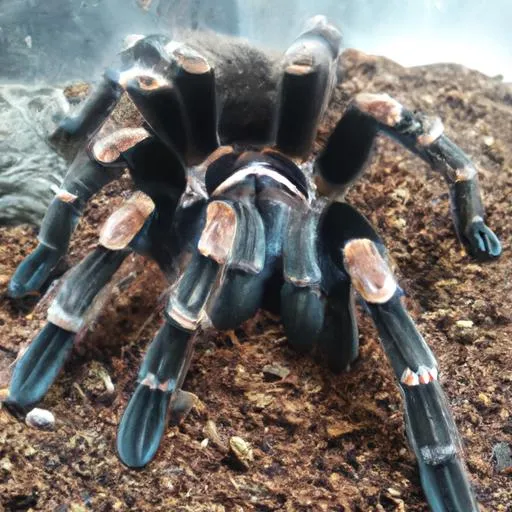
Several factors contribute to the size of tarantulas. Genetics, diet, and environmental conditions play significant roles in determining how large a tarantula will grow. Understanding these factors helps in appreciating the intricacies of tarantula development. Genetics, diet, and environmental conditions interact to influence how big a tarantula can become. These elements emphasize the complex factors that determine the size of these impressive arachnids. The factors explain why some tarantulas become giants, while others remain smaller.
Genetics and Diet Size Factors
Genetic factors are the primary determinant of a tarantula’s potential size. Different species have different genetic predispositions for size. Diet is also a crucial factor. Tarantulas that receive a consistently nutritious diet with plenty of food are more likely to reach their full size potential. Feeding frequency, the quality of food, and the variety of food all influence growth. Regular, high-quality meals support rapid growth, while a poor diet can stunt their development. Genetics and diet work hand in hand to determine size, demonstrating the interplay of nature and nurture in the development of tarantulas. Proper nutrition and genetics are critical for reaching their maximum size and overall health. Their maximum size potential is usually determined by their genetic makeup.
Environmental Conditions and Growth
Environmental conditions also play a significant role in a tarantula’s growth. Factors such as temperature, humidity, and the availability of space can influence their size. Tarantulas that live in optimal conditions, with the right temperature and humidity, are more likely to thrive and grow larger. Providing ample space is also important. A cramped environment can restrict growth. Environmental factors influence how a tarantula reaches its full size potential. Therefore, mimicking their natural environment is crucial in captivity. Maintaining the correct temperature, humidity, and providing enough space are essential. Proper environmental conditions are critical for the overall health and size development. These conditions highlight the importance of creating environments that support these amazing creatures.
In conclusion, when determining which tarantula is the biggest, the Goliath birdeater and the Pinkfoot Goliath are usually at the top of the list. Other notable giants include the Giant Huntsman Spider and several other impressive tarantula species. Several factors influence the size of these magnificent arachnids, including genetics, diet, and environmental conditions. These spiders are a testament to the incredible diversity and wonder of the natural world, underscoring the importance of appreciating and protecting these creatures and their habitats. By understanding the factors that affect their size and distribution, we can better appreciate and protect these incredible arachnids and their essential role in the ecosystem. These giants, along with many other species, continue to fascinate and inspire. The next time you hear the question which tarantula is the biggest, you’ll be equipped with the knowledge to answer!
